Features
David Asper has brought excitement to a new generation of basketball fans with the Winnipeg Sea Bears

By BERNIE BELLAN
June 8, 2023 The name David Asper has long been associated with Winnipeg sports teams.
A former Chair of the Winnipeg Blue Bombers – and someone who achieved both notoriety for how directly involved he became with that team – even going so far as to invade the locker room after a particularly brutal loss (only to be pushed out by now CEO Wade Miller), Asper was also involved with a pro basketball team known as the Winnipeg Thunder, which played here from 1992-94.
This past year, however, Asper took another foray into sports at the ownership level with Winnipeg’s newest sports franchise, the Winnipeg Sea Bears.
The Sea Bears play in a summer league – which is also when the Winnipeg Thunder, a team in which Asper also had an owership stake played. (Another team, the Winnipeg Cyclone, owned by Earl Barish, played in the winter.),
The Sea Bears franchise is the newest addition to what is now a 10-team All Canadian league known as the Canadian Elite Basketball League. So far, by any measure, the team is off to a roaring start.
Recently I chatted with Asper about what led him to enter – again, into the risky world of professional sports and why he’s confident that this time around, the Sea Bears and the league they play in, will be lasting successes.
I began by asking him whether he’s pleased with the attendance at Sea Bears games thus far? (At the time of our conversation the team had played five home games, with an average attendance over 4,000 each game.)
“Yes, I’m very pleased with the reception we’ve gotten so far,” Asper said, “but it’s my nature – it’s the entrepreneur’s curse, to be very cautious about it, because when we began – when you start a business – any business, you never know whether anyone’s going to actually show up and, if they do, whether they’ll keep coming back.”
I suggested to Asper that the history of pro basketball teams in Winnipeg is less than impressive, but he responded that the Winnipeg Thunder actually did “very well,” but “both leagues that the team was affiliated with collapsed.”
“The Thunder played in the summer. The Cyclone played in the winter. I had a better perspective of seeing what would happen if you played in the summer – which is what appealed to me about this league,” Asper added.
I asked, “How far back in time did your planning for the Sea Bears begin?”
Asper said he “started in the spring of ’22, spent time all last summer going across country to games, and then I decided I really liked what I was seeing. I was concerned about the show – the competitiveness of the basketball – and I’m not a basketball person, but I think I have a sense of when something is entertaining and athletic.
“By mid-summer we thought we were going to go for it, we had some negotiation with the league, and we were finally able to announce – late, relatively speaking, at the end of November. We put ourselves in quite a time crush being able to launch for 2023 because training camp starts mid-May, so we only had five months really. We had to hire staff, get tickets out and get ourselves prepared, so it’s been a very hectic time.”
I said to Asper that I wasn’t all that familiar with the Canadian Elite Basketball League and he did give me some of the league’s history, but after the interview I dug deeper into the league’s history.
The CEBL is now in its fifth season, having begun in the summer of 2019, originally with six teams, which were all owned by the league. It now has ten teams in two divisions, from six different provinces:The east division is made up of one team in Quebec (in Montreal), and four in Ontario (in Brampton, Niagara, Ottawa, and Scarborough); and a west division: one in Manitoba (the Sea Bears), one in Saskatchewan (in Saskatoon); two in Alberta (in Calgary and Edmonton), and one in BC (in Langley).
While five of the teams are still owned by the league, there are now five private owners – in Langley, Calgary, Edmonton, and Scarborough, in addition to Asper in Winnipeg.
For the most part the teams play in smaller venues, with the exception of the Sea Bears, who play in Canada Life Centre, which can hold over 15,000 (although seating is confined to the lower level).
Another difference between the CEBL and other leagues that have come and gone in Canada is the heavy emphasis on Canadian players on each team. As Asper explained, each team has 10 players, of whom six have to be Canadian, three can be American, and a tenth can be international.
“We collaborate with Basketball Canada,” Asper observed, and it is a great opportunity for Canadian university players to hone their skills.
Not only that, Asper added that “last year nine players coming out of our league signed NBA contracts,” which gives you an idea what a high level of basketball is played in the CEBL.
According to Wikipedia, each team operates under a salary cap of only $8,000 per team per game. (There are 20 regular games, followed by a round robin playoff tournament modeled on the NCAA Final Four tournament.)
I asked Asper about what I described as his “abiding interest in sports,” given his history of involvement with both pro basketball and football teams.
He said that he thinks “sport is an important part of culture.”
“Where does it come from?” I asked.
“Well, I played sports as a kid,” Asper answered. “I didn’t play basketball, but I’ve seen the power of sports to be inclusive, to be inspirational, to be a shared common experience. I believe very strongly – I know that others in the arts community will dispute it, but I believe sports is as integral to culture as is art and other forms of activities.”
I asked Asper about the role he played in the building of IG Field (where the Blue Bombers now play).
He said that it was never his idea to build a new stadium at the University of Manitoba.
“My plan was to build it at Polo Park and I had everyone lined up and agreed to build it there. I don’t know what happened. I had led the whole project and Greg Selinger wound up taking it over.
I remarked: “Oh yah, I remember, there was an election.”
Turning back to the Sea Bears, I observed that, from pictures in the paper and what I had seen on TV, the team has been drawing a much younger crowd than say the Bombers or Jets – and a far more diverse crowd ethnically. I asked Asper whether that was part of the plan when he thought of starting a basketball team here.
He said, “The answer is yes. When I went across the country last summer and went to games and talked to fans, you could visibly see who was there and a lot of them were young families. There were also grandparents – people my age. It was a broader demographic than I thought it would be. I think that seeing young people at a game is very appealing to a broad age demography, but Bernie, when I would talk to first or second generation Canadians at those games, these were not people who grew up with hockey or football, but for them – basketball – when I talked about shared common experience and shared culture, I’m talking about these families – these new Canadians, meeting with legacy, old Canadians and having a shared common experience as Canadians that was so heart-warming. I said: ‘I want to be part of this.’
“It may be relatively small compared to football and hockey, but it’s doing a service. It’s serving a larger purpose, and what we’ve seen at the games so far – and it really overwhelms me, is that’s exactly what’s happening in Winnipeg.”
“I was talking to kids at the last game – they were part of two youth groups, who had never been to Canada Life Centre and came for the first time to a basketball game – and it blew their minds. They could not believe how great this was – predominantly new Canadians.”
I asked what the ticket price structure is?
Asper said, “They start at roughly 20 bucks. We try to have an entry point for families that’s very accessible.”
I asked whether Ruth (David’s wife) is involved with the team (since she was pictured seated along side David at the first game)?
Asper said, “No, but she’s the team’s number 2 fan.” He also told me that Ruth has a very strong background herself in sports.
I said that I remembered when she was co-owner of Tights, along with other fitness centers in Winnipeg over the years.
Asper said, “Not only that, but Ruth was the trainer for the (University of Manitoba) Bisons football team and she was the trainer for the Churchill Bulldogs football team. She’s in the Churchill Bulldogs Hall of Fame. She really has an experiential perspective on sports. She’s not involved, but she certainly knows the owner – let’s put it that way.”
I wondered about the stability of this particular basketball league – given the past failures of other basketball leagues that had Winnipeg franchises.
“Have there been any teams that have dropped out since the league started five years ago?” I asked.
“There was a team in Newfoundland, and it dropped out,” Asper answered. “Other teams have moved to different markets, so Hamilton moved to Brampton, Guelph had a team that moved to Calgary – which was important because that created a west and an east division. The league has seen unparalleled success this year. The growth in the league is really quite remarkable.”
Asper also noted that “We’re trying to build a sustainable summer event, so it takes a significant investment to start a team up, but the owners who are either starting or acquiring franchises are very committed to investing and growing. The league itself has come through its start-up anarchy, which is always the case in a start-up anything and now it’s moving into scaling up – because it’s working. People want to see this product.”
He also observed that the league is very competitive. Because it’s such a short season (only 20 games), “every single game matters.”
Asper explained that “we have a unique ending to the games” (in the CEBL). “Instead of the clock just running out – like you’d see in an NBA game, where you’d see them try to manage the clock, where the team that’s winning will try to run out the clock and the team that’s losing will try to create fouls and slow it down, what we do is, at the first stoppage in play with close to four minutes left to go in the game we create what’s called a ‘target score,’ so we add nine to the leading team’s score, so that, for example, the score is 84-80, then we turn off the clock, and the first team to 93 wins.
“So, not only does every game matter, the way the games end are so exciting that people leave feeling exhilarated or demoralized. There’s a really emotional way that our games end that really creates a compelling fan experience.”
I asked: “Anything else you want to add?”
Asper said: “Get your tickets at seabears.ca!”
Features
Japanese Straightening/Hair Rebonding at SETS on Corydon

Japanese Straightening is a hair straightening process invented in Japan that has swept America.

Features
History of the Winnipeg Beach Synagogue: 1950-2025
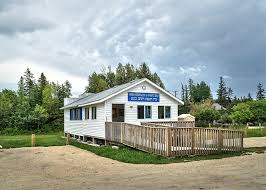
By BERNIE BELLAN The history of the Winnipeg Beach Synagogue is a fascinating one. We have had several articles over the years about the synagogue in The Jewish Post & News.
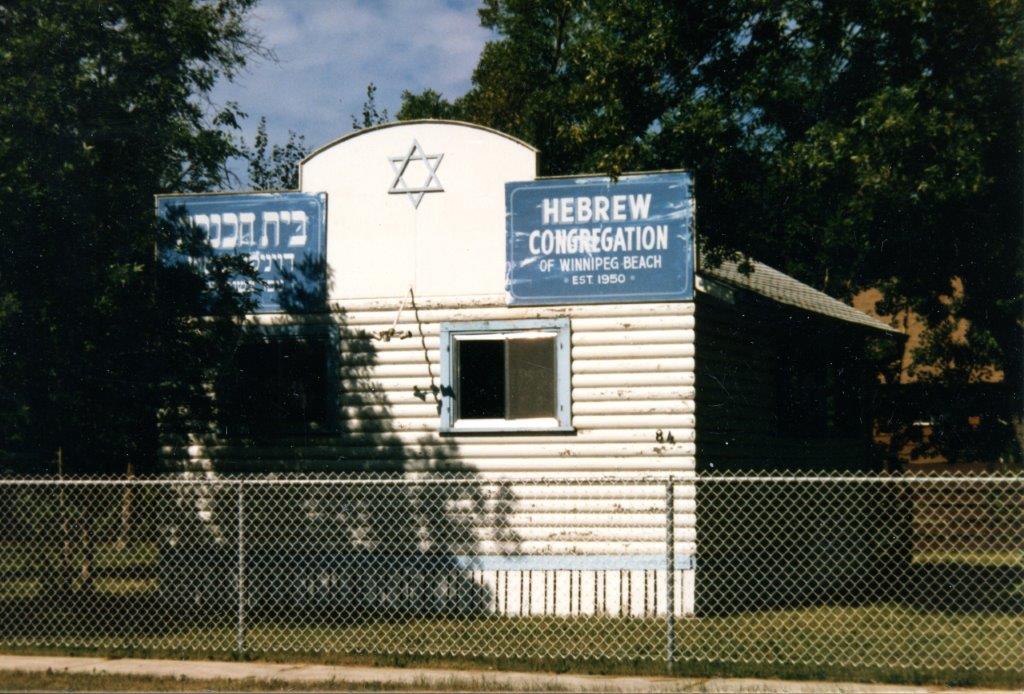
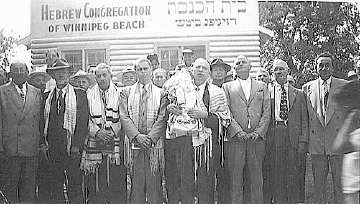
In June 2010 I wrote an article for The Jewish Post & News upon the 60th anniversary of the synagogue’s opening. Here are the opening paragraphs from that article:
“Sixty years ago a group of Winnipeg Beach vacationers decided that what their vacation area lacked was a synagogue. As it happened, a log cabin one-room schoolhouse in the Beausejour area happened to be available.
“In due course, the log cabin was relocated to the corner of Hazel and Grove in Winnipeg Beach, where it stayed for 48 years.”
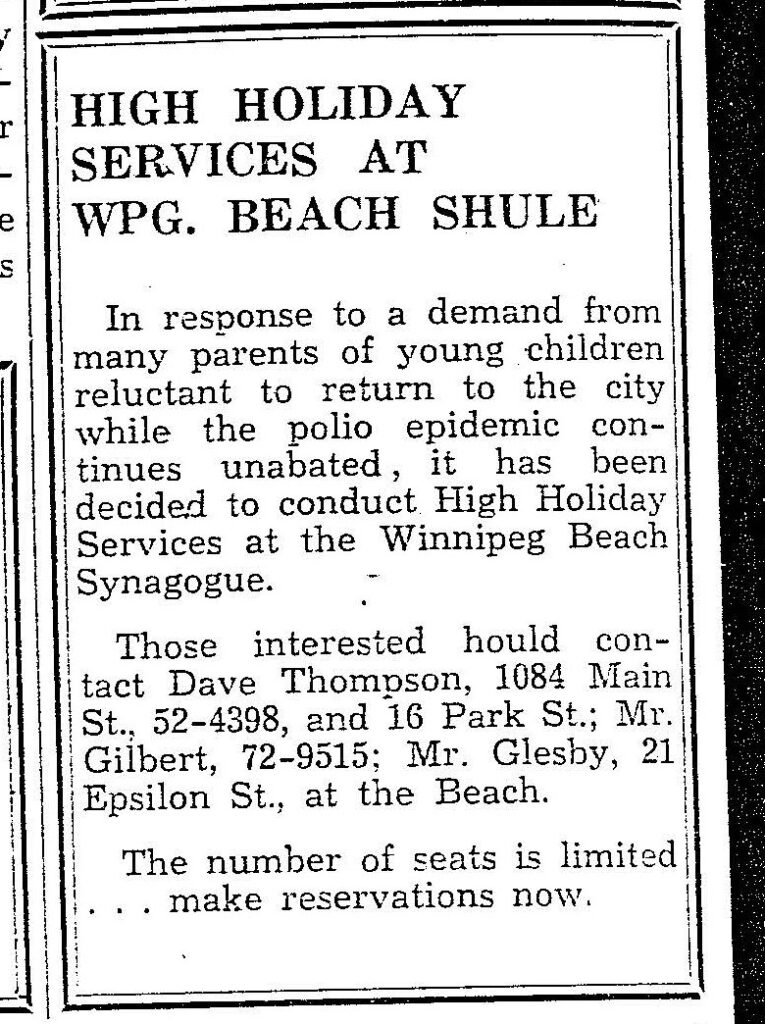
In December 1994 my late brother, Matt, wrote a story about the spraying of antisemitic grafitti on the synagogue which, at that time, was still situated at its original location on the corner of Hazel and Grove in the town of Winnipeg Beach:
“Two 16-year-olds spraypainted slogans like ‘Die Jews,’ ‘I’ll kill you Jews,’ and other grafitti in big letters on the beach synagogue.
“Jim Mosher, a news reporter for the Interlake Spectator in Gimli, said last Halloween’s vandalism against the synagogue wasn’t the first. In the late 1980s, he claimed, it was spraypainted with swastikas.
“Jack Markson, a longtime member of the Winnipeg Beach Synagogue, last week also said he could remember finding anti-Semitic grafitti spraypainted on the synagogue ‘a few years ago,’ and at least twice in the 1970s, when the cottage season was over.”
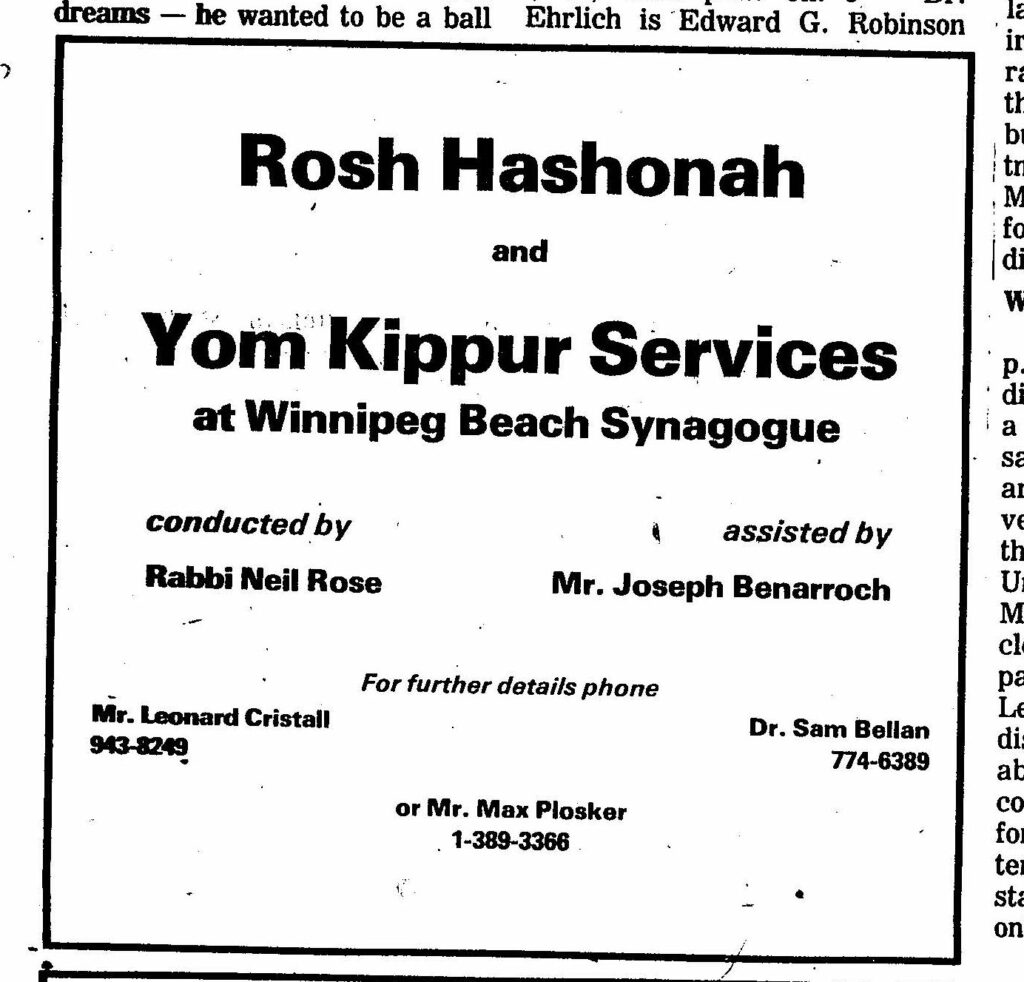
My 2010 article continued: “In 1998 the Town of Winnipeg Beach informed the members of the synagogue that the building would have to be hooked up to the town’s sewer and water system. Rather than incur the cost of $3-4,000, which was thought to be ‘prohibitive,’ according to longtime beach synagogue attendee Laurie Mainster, synagogue goers looked elsewhere for a solution.
“As a result, the board of Camp Massad was approached and asked whether the synagogue might be relocated there, with the understanding that the synagogue would be made available to the camp at any time other than what were then Friday evening and Saturday morning services.
“Over the years the ‘beach synagogue’ had come to be a very popular meeting place for summertime residents of Winnipeg Beach and Gimli. In fact, for years minyans were held twice daily, in addition to regular Saturday morning services. Of course, in those years Winnipeg Beach was also home to a kosher butcher shop.
“While the little synagogue, which measured only 18 x 24 feet, has gone through several transformations, including the move to Camp Massad, and the opening up to egalitarian services in 2007 (The move to egalitarian services was as much a practical necessity as it was a nod to the equality of women – the only Kohen present at the time was a woman!), it has always remained cramped at the best of times.
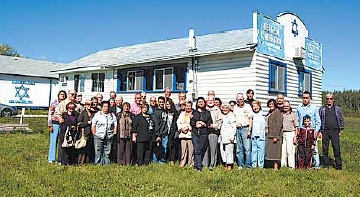
“In recent years the synagogue has seen the addition of a window airconditioner (although to benefit from it, you really have to be sitting just a few feet away), as well as a fridge that allows synagogue attendees to enjoy a regular Saturday morning Kiddush meal following the service.
“According to Laurie Mainster, the Saturday morning service has continued to be popular, even though many of the attendees now drive in from Winnipeg, as they have sold the cottages they once maintained.
“On the other hand, one of the side benefits to being located on Camp Massad’s grounds has been an infusion of young blood from among the camp counsellors.
“Since there is no longer a rabbi available to conduct services (Rabbi Weizman did lead services for years while he had a cottage at the beach), those in attendance now take turns leading the services themselves.
“Anyone may attend services and, while there are no dues collected, donations are welcome. (Donations should be made to the Jewish Foundation of Manitoba, with donors asked to specify that their donations are to be directed to the beach synagogue.)
“Mainster also says that the beach synagogue is now undergoing an expansion, which will be its first in 60 years. An entirely new space measuring 16 x 18 feet is being added – one that will allow for a real Kiddush area. (Until now, a table has been set up in the back of the synagogue and synagogue goers would help themselves to the buffet that is set up each Saturday during the summer. While pleasant enough, it will certainly be more comfortable to have an actual area set aside for the Saturday afternoon after service lunch.)
“As for dress, longtime attendee Abe Borzykowski (in an article written by Sharon Chisvin for the Free Press in 2007) remarked that ‘I don’t think there are many synagogues where people can attend in shorts, T-shirts and sandals and not feel out of place.’ “
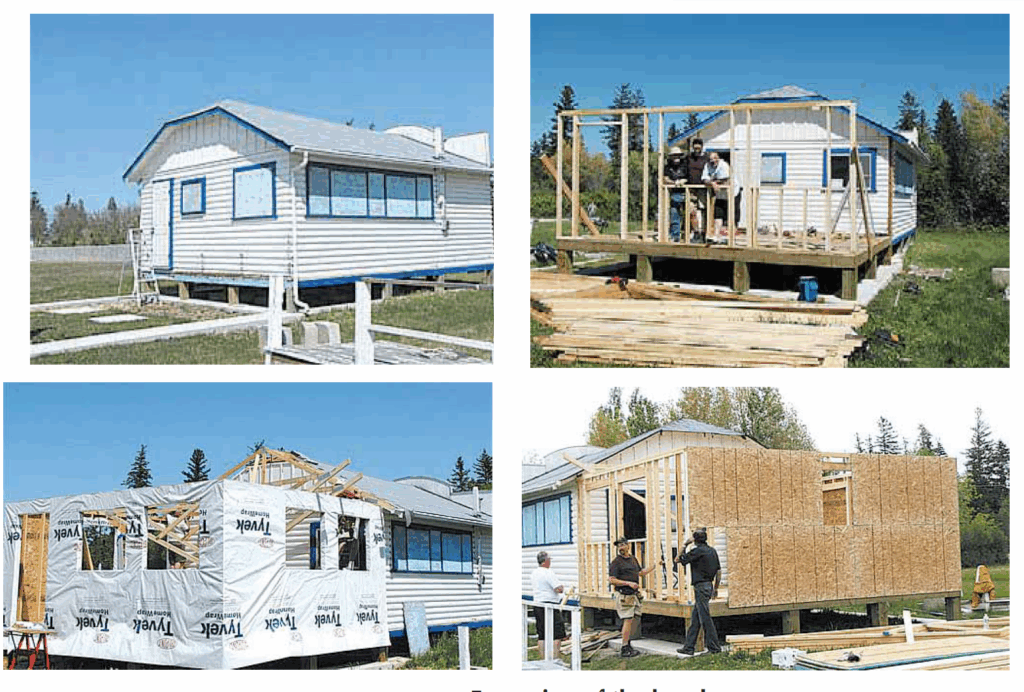
As mentioned in that 2010 article, the beach synagogue at that time was about to undergo an extensive remodelling. Here is an article from a January 2011 issue that describes that remodelling process. The article was written by Bernie Sucharov, who has been a longtime member of the beach synagogue:
“The Hebrew Congregation of Winnipeg Beach made a major change to the synagogue this past summer. With the help of many volunteers, Joel Margolese being the project manager, the synagogue was expanded and an addition was built to handle the overflow crowds, as well as to add more space for the kiddush following services.
“The volunteers spent many Sundays during the summer months building the addition. Bad weather caused many delays, but finally the addition was completed one week before the official summer opening.
“The volunteers were: Joel Margolese, Gordon Steindel, Sheldon Koslovsky, Viktor Lewin, Harvey Zabenskie, Nestor Wowryk, Kevin Wowryk, Victor Spigelman, Jerry Pritchard, and David Bloomfield.
“On Sunday, June 25, 2010 a special ceremony was held to affix a mezzuzah to the front entrance door. Gordon Steindel had the honour of affixing the mezzuzah, which was donated by Sid Bercovich and Clarice Silver.
“Refreshments and food for the day were prepared by Phyllis Spigelman, also known as our catering manager. Throughout the summer, Phyllis, Lenore Kagan and other friends prepared the food for our kiddush.
“A sound system was donated by Arch and Brenda Honigman in memory of their father, Sam Honigman z”l. “The system was installed by Joel Margolese and Stevan Sucharov. This will allow the overflow crowd to hear the service in the new addition.
“There were also generous donations of 50 chumashim and an air conditioner. The chumashim were donated by Gwen, Sheldon and Mark Koslovsky. The air conditioner in the new addition was donated by Joel and Linda Margolese.
“The official opening of the synagogue for the summer took place on July 3, 2010. We had an overflow crowd of 70+ people.”
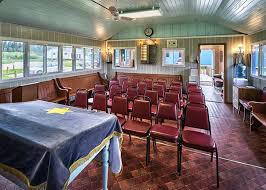
Since that 2010 major addition to the synagogue, it has also added a wheelchair ramp (although I’ve been unable to ascertain exactly when the ramp was built). Also, the synagogue also has its own outdoor privy now. (Attendees used to have to use facilities in Camp Massad.)
And, as already noted in article previously posted to this site (and which you can read at Beach Synagogue about to celebrate 75th anniversary), in recognition of that occasion, on August 2nd members of the synagogue will be holding a 75th anniversary celebration.
As part of the celebration anyone who is a descendant or relative of any of the original members of the first executive committee is invited to attend the synagogue that morning.
If you are a relative please contact Abe Borzykowski at wpgbeachshule@shaw.ca or aborzykowski@shaw.ca to let Abe know you might be attending.
Features
Kinzey Posen: CBC Winnipeg’s former “go-to guy”

By GERRY POSNER If former Winnipegger Lawrence Wall was the CBC go-to guy in Ottawa, CBC Winnipeg had its own version of a go-to guy for many years with none other than the very well known Kinzey Posen. Of course, many readers will recognize that name from his career with Finjan, the Klezmer group so famous across Canada and beyond. It has been written about Posen and his wife Shayla Fink that they have been involved in music since they got out of diapers. And, as an aside, their love and ability in music has now been transmitted to the next generation as in their son, Ariel Posen (but that’s another story).
Kinzey Posen (not to be confused with Posner, or maybe we are to be confused, but who knows for sure?), was a graduate of Peretz School, having attended there from nursery right until Grade 7, graduating in1966. That was followed by Edmund Partridge and West Kildonan Collegiate. Musically, he was in large part self taught. However, he did have some teachers along the way. After moving to Vancouver – from 1974-78, he had the chance to study acoustic classical bass with a member of the Vancouver Symphony Orchestra. When Kinzey lived in Vancouver, he also worked as a jazz musician.
Upon returning to Winnipeg, Kinzey enrolled as a mature student at the University of Winnipeg, where he obtained a Bachelor of Urban Studies degree. Although the degree was in no way connected to the career that followed, his attending the University of Winnipeg was critical to his connecting with the CBC. Why? you ask. Kinzey had a position after graduation working for the Institute of Urban Studies. While there, he met someone who invited him to work for the Department of Continuing Education as one of their program directors. At the time the Department of Continuing Education was located at 491 Portage Avenue, which was also known as the TJ Rice Building. The CBC also leased some space in the same building. According to Kinzey, the CBC part of the building “included HR, different shows and other support offices. Continuing Education was located in the basement and main floor and that’s where I worked.”
KInzey had long had an interest in the CBC, which made the fact that the CBC had some offices in the same building where he was working serendipitous. That Kinzey might be interested in visiting the CBC was not an accident. As a young boy he had a nightly connection to CBC, as it was his ritual to listen to CBC Radio (as well as all sorts of other radio stations across the USA) on his transistor radio every night in bed. He became enamoured of one particular CBC host, Bill Guest, so that when going to sleep, he imagined that he was Guest doing interviews with imaginary guests. That dream of working for CBC became a reality when he had a chance to do a one week gig with Jack Farr’s network program.
Kinzey took a week off from his Continuing Education job and spent five days at the CBC. That week was a training session for Posen, as he had to create ideas, research, pre-interview, write the script, and set up the studio for Farr’s interview. He was almost in his dream job – although not quite – since it was only for one week. His opportunity, however, came in 1988, when he was offered a one-year term as a production assistant – the lowest guy on the ladder, for a show called “ Simply Folk,” with the late Mitch Podolak as the host. Although he was indeed at the bottom as far as those working on the show were concerned, he took a chance and gave his notice to the U of W. The rest is history. In his new job, Kinzey learned how to become a producer. Lucky for him, at the end of the year, when the person he replaced was supposed to come back, she never returned (just like the song, “MTA,” by the Kingston Trio). At that point, Kinzey was hired full time at the CBC.
Kinzey was a fixture at the CBC for 27 years. During those years, Kinzey had the chance to work with Ross Porter, a respected former CBC host and producer, also with Karen Sanders – on the “Afternoon Edition.” One aspect of Kinzey’s job on the Afternoon Edition was to come up with ideas, mix sound effects, arrange interviews and music, to create a two-hour radio experience. In addition, he covered jazz and folk festivals and, as a result, was exposed to some of the best musicians in the world. With Ross Porter in the 1990s, he worked on a network jazz show called “ After Hours,” which was on from 8-10 PM five nights a week. Kinzey was involved with writing the scripts, picking the music, and recording the shows, as well as editing them and then presenting them to the network for playback.
Of course, over his career, Kinzey had many memorable moments. He told me about one of them. The story revolved around the National Jazz Awards one year in particular. The awards were to be broadcasted after the National News which, in those days, began much earlier in the evening, and were over by 8:00 pm. The legendary Oscar Peterson was lined up to play a half hour set at the awards, starting at 7:30. But, as Kinzey told me, Oscar Peterson had a “hate on” for the CBC ecause one of his recorded performances was wrongly edited and he refused to appear on CBC under any circumstances. As the time neared 8:05 PM, which was when the CBC was to begin its broadcast of the jazz awards, it became apparent that Oscar was not going to finish on time. As the producer of the awards show, Kinzey was tasked with telling Oscar Peterson to wrap it up and get off the stage. There was Kinzey Posen, a huge fan of Oscar Peterson, now faced with the prospect of telling Oscar – while he was still playing – with 500 people in the audience, to stop and get off the stage. Not often was or is Kinzey Posen frozen, but that was one such moment. There was one loud “Baruch Hashem” from Kinzey when Oscar completed his set literally just in time.
Clearly, Kinzey was part of a very successful run with After Hours as it was on the air for 14 years. It was easily one of the most popular shows on CBC Radio 2, and a winner of several broadcasting awards. Kinzey also played a major role in producing a two part documentary about legendary guitarist Lenny Breau.
When After Hours ended, Posen became one of the contributing producers to Canada Live and specialized in producing live radio specials for the network, such as the Junos, for CBC Radio One and Two. Needless to say, his career planted Posen in the world of some top notch musicians, including his time spent working with Robert Plant (Led Zeppelin), Dave Brubeck, Randy Bachman, Chantal Kreviazuk and a list of prominent names in the Canadian, American and European music spheres. Locally, the CBC came to refer to Kinzey as the Jewish expert. I would add music expert to that title.
After his 27 year run at the CBC – and before he fully retired, Kinzey went on to work for the Rady JCC as a program director for a year and a half. Of course, to say that Kinzey Posen is retired is a major contradiction in terms. You really can’t keep him down and he has his hand in a variety of programs and projects – most of which he remains silent about, as is his style.
When I realized the full depth and talent of Kinzey Posen, I quickly concluded that he must certainly be related to me. Even if he isn’t, I now tell people he is.
